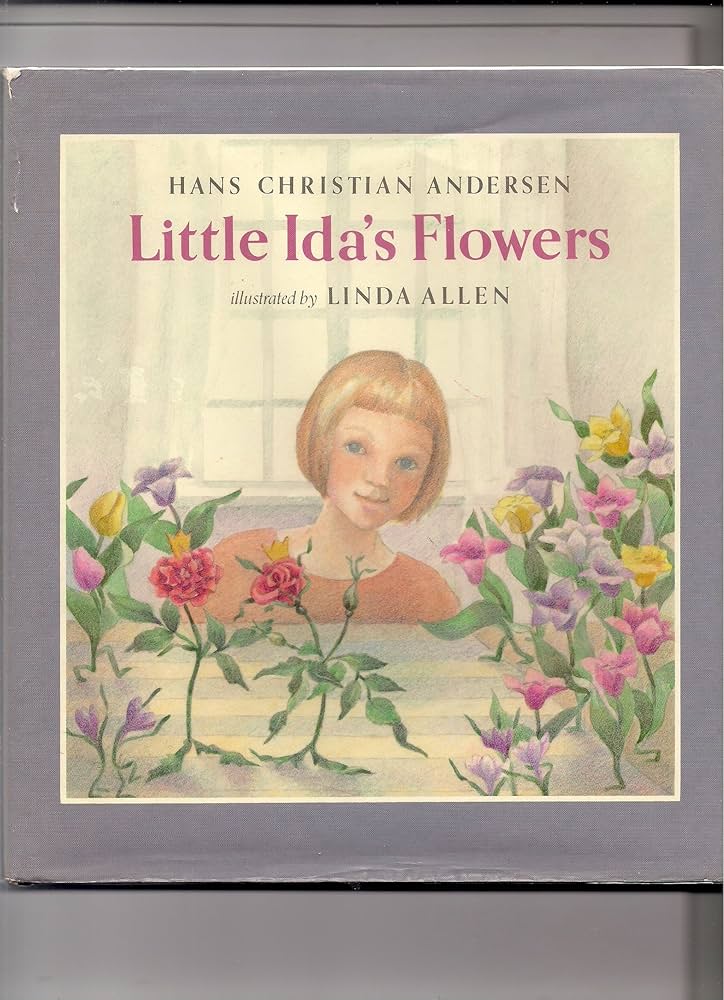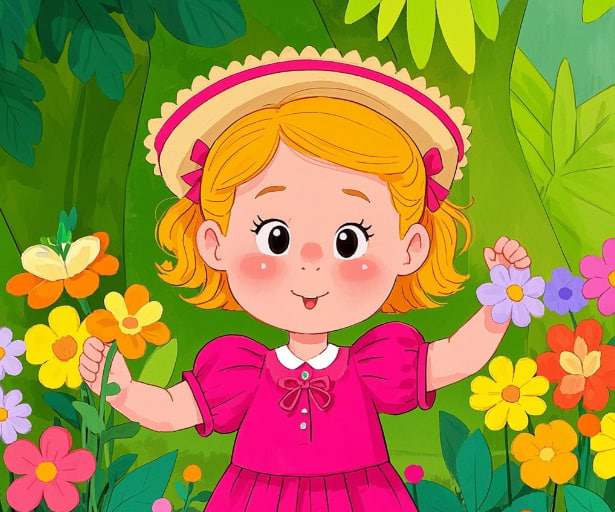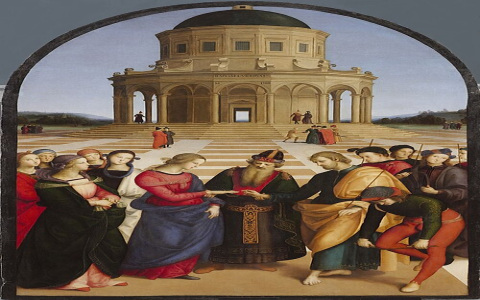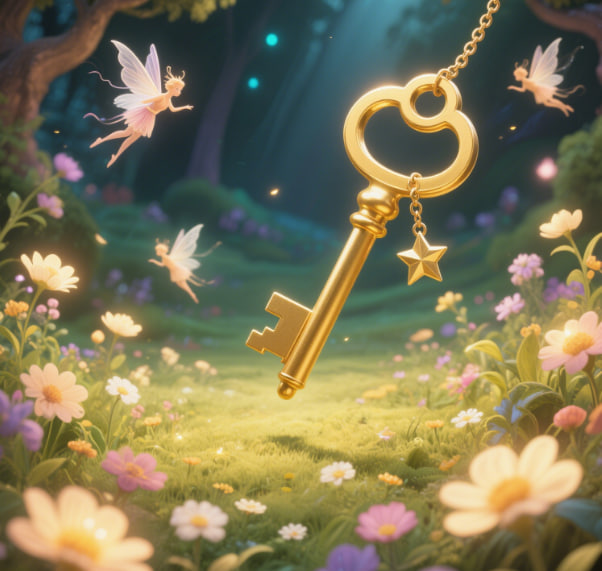Did you know that sometimes when we see something strange, there is actually a beautiful story behind it? Today, I want to tell you about a wonderful experience between a little girl and her flowers. This story comes from a fairy tale written by Hans Christian Andersen called “Little Ida’s Flowers.”
The story begins when a little girl named Ida discovers that all the flowers she has planted are wilting and look like they are about to die. She feels a little sad and runs to ask the college student who lives upstairs, “Why are my flowers suddenly looking so lifeless?”
The college student smiles and says, “Oh, they went to a dance last night.”
Ida finds this funny and says, “How can flowers dance? They don’t have legs!”

The college student replied seriously, “At night, after we all go to sleep, the flowers dance and have a party every night.”
Although it didn’t sound very realistic, Ida still liked the explanation. She thought to herself, “I wish I could see it with my own eyes!”
When it was time to go to bed, Ida took her doll Sofia off the bed and put her in the drawer. She said, “You sleep in the drawer tonight, and let these sick flowers sleep in your bed. Maybe they’ll get better.”
Then she carefully placed the flowers that looked lifeless on the bed, covered them with a small blanket, and climbed into bed herself.
In the middle of the night, Ida woke up and suddenly thought of something: “I wonder how the flowers are doing?” She got out of bed quietly and tiptoed to the door.
At that moment, she heard a beautiful piano melody, a sound she had never heard before. She was excited and thought to herself: “It must be the flowers dancing!”
So she tiptoed into the room to take a look. Wow! The scene before her eyes was magical!
There were no lights in the room, but the moonlight shone in, making the whole room as bright as day. The floor was covered with flowers. Hyacinths and tulips were lined up in rows, dancing together as if they were having a big party.
The most eye-catching was a large lily sitting at the piano, playing and nodding its head to the beat, looking like a conductor.
Even the flowers that had looked like they were about to die were now jumping around and joining the dance.Even more surprising was the sound of “clickety-clack” coming from the drawer. Ida’s toys jumped out and joined the flowers in dancing!
Then, a large group of beautiful flowers entered the hall, led by two roses wearing small golden hats on their heads, looking like a king and queen.Behind them were purple cross flowers and carnations, which brought the orchestra with them. Everyone danced and sang together, and the scene was extremely lively.
Finally, the ball ended, and the flowers said good night to each other and quieted down one by one. Ida also returned to her bed, closed her eyes, and saw the magical ball in her dreams again.
What is the truth behind the story?
On the surface, this story is about flowers dancing at night, but it actually expresses children’s rich imagination and curiosity about the world. Things that seem impossible to adults are full of magic and miracles in the world of children.
Why did Ida believe that flowers could dance? Because she was willing to believe and imagine. And the college student wasn’t trying to deceive her, but rather inspiring her imagination in an interesting way.
In reality, flowers don’t dance or hold parties. But from another perspective, perhaps nature itself possesses an invisible beauty. For example, when flowers bloom in spring, the wind blows gently, and the petals sway lightly, as if dancing; at night, when all is quiet, the sounds of insects and birds in the garden resemble a small concert.
Therefore, “flowers dancing” may not be true, but it represents a beautiful feeling.
What can we learn from this story?
It is important to stay curious.
Ida was able to see the flowers dancing because she always wanted to know the answer. Children are full of curiosity about the world, and this attitude is something we should cherish and protect.
Imagination is a skill.
Although flowers don’t dance, we can create many interesting stories through our imagination.Imagination allows us to see another side of the world and can also help us solve problems and express our emotions.
Don’t easily dismiss other people’s ideas.
Adults often say, “That’s impossible,” but sometimes when we look at things from a different perspective, we discover a different kind of beauty. The college student didn’t tell Ida directly that flowers don’t dance, but responded to her in an interesting way, which was both warm and clever.
There is “magic” everywhere in life.
If we observe carefully, we will find that there are many “magical moments” in life. For example, the morning sun shining through the window, the leaves swaying in the wind, the rainbow after the rain… These are all gifts from nature, as long as we are willing to appreciate them.
The innocence of childhood is the most precious treasure.
As we grow up, we may become more rational and realistic, but don’t forget the sense of wonder we had as children. Keeping a little childlike wonder in your heart will make life more interesting.
Conclusion
Little Ida’s Flowers is not just a fairy tale. It tells us that the world is not only real, but also full of dreams and imagination. Every child has a garden in their heart where all kinds of flowers bloom. They may not speak, but as long as you believe in them, they will dance.
Next time you see a flower in full bloom, try to imagine that it has just finished dancing.




